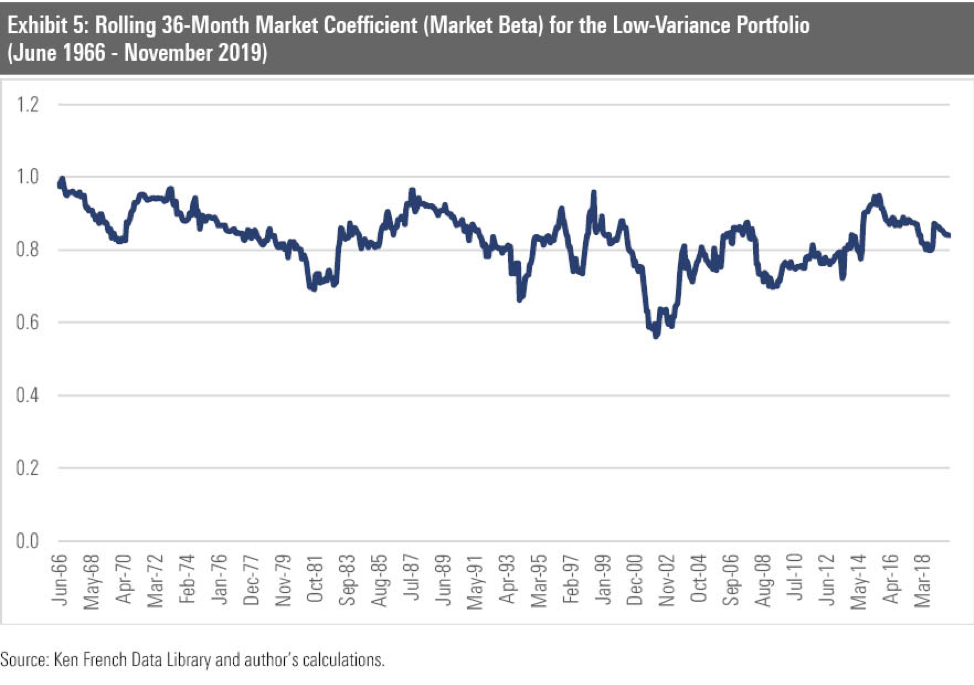Low volatility ETFs might be in the back of investors’ minds, especially when the markets continue to roar to new record highs in the current extended bull market. However, investors should keep these funds on their radar in the event volatility does strike or worse, a sharp downturn sends the markets in a daze.
“Low-volatility strategies should lag a cap-weighted index during bull markets but hold up better during downturns,” Daniel Sotiroff wrote in Morningstar. “They’re more appropriately viewed as strategies that are less risky than the broader market. As such, their market coefficient, or market beta, should be lower than 1. Exhibit 5 shows that the market beta of the low-variance portfolio consistently ran below 1 between July 1963 and November 2019.”

Investors need to understand the nature of how these funds work within their current portfolios versus using them as their sole exposure to the markets.
“What’s clear is that low-volatility strategies are an effective means to cut back on risk, but they won’t always perform as well as a cap-weighted index,” added Sotiroff. “Thus, investors should view them as a risk-reducing strategy, not one that is expected to deliver market-beating total returns. They’re a great alternative for investors who want exposure to stocks but with less risk than a cap-weighted index, and they shouldn’t be used as a substitute for dedicated value and profitability strategies.”
A Low Volatility ETF Option
For investors looking to smoothen the ride of volatility, they can look at ETFs like the FlexShares US Quality Low Volatility Index Fund (NYSEArca: QLV). Per the site’s fund description, QLV integrates rigorous fundamental analysis through a quality screen of US-based companies which can be viewed as a potential means to mitigate future volatility.
FlexShares believes this is different than other low volatility funds that may utilize only historical return and/or correlation data in hopes the lower volatility will carry forward. The core components of the quality scoring model are based on quantitative ranking of various metrics obtained from company filings, and these scores consist of three core components: management expertise, profitability and cash flow.
Additionally, QLV incorporates strict sector controls to help prevent the index from deviating too significantly from the broader US-equity market. Constructs the final constituents list with consideration to the exposure of the low volatility.
QLV seeks investment results that correspond generally to the price and yield performance of the Northern Trust Quality Low Volatility Index. The underlying index is designed to reflect the performance of a selection of companies that, in aggregate, possess lower overall absolute volatility characteristics relative to the Northern Trust 1250 Index, a float-adjusted market capitalization weighted index of U.S. domiciled large- and mid-capitalization companies.
Fund facts:
- Invests in US-based companies and employs quality factor as a tool to potentially mitigate future volatility
- Utilize constraints to help optimize and remove biases
- Maximize exposure to low volatility factor
For more market trends, visit ETF Trends.

